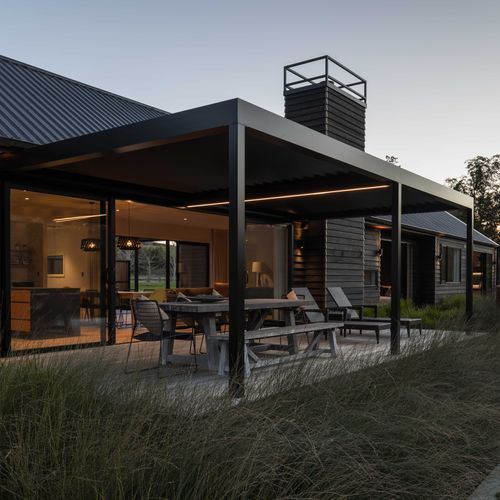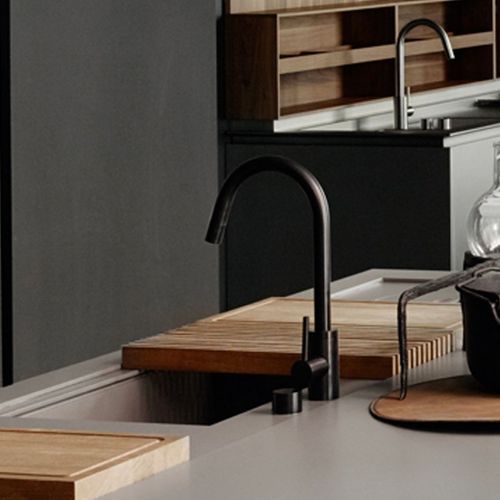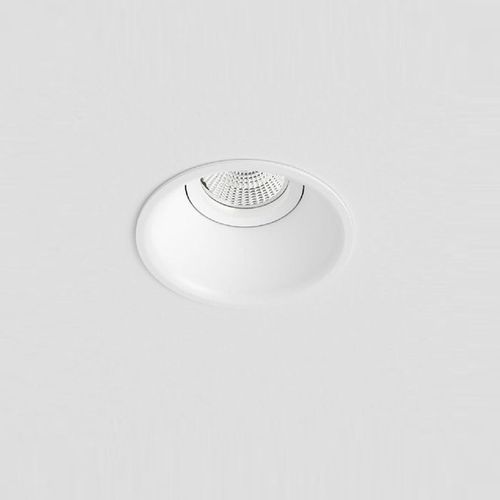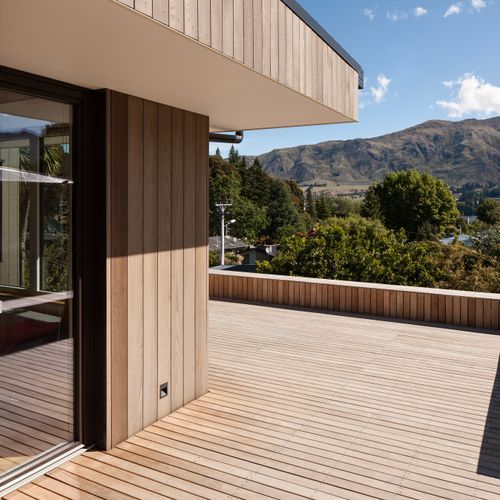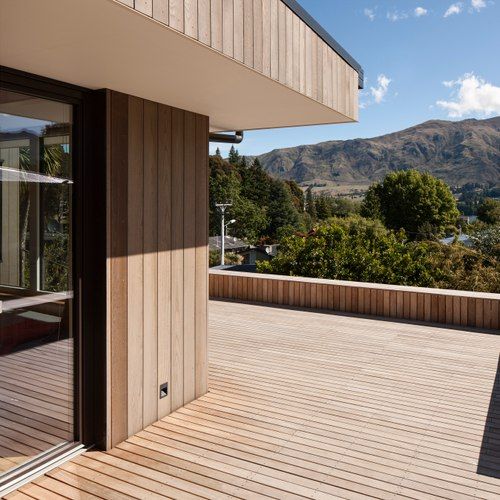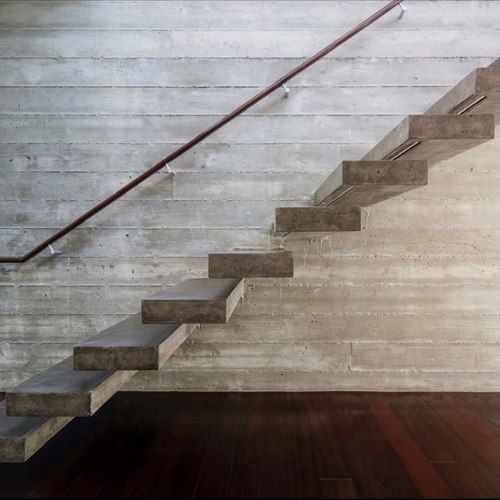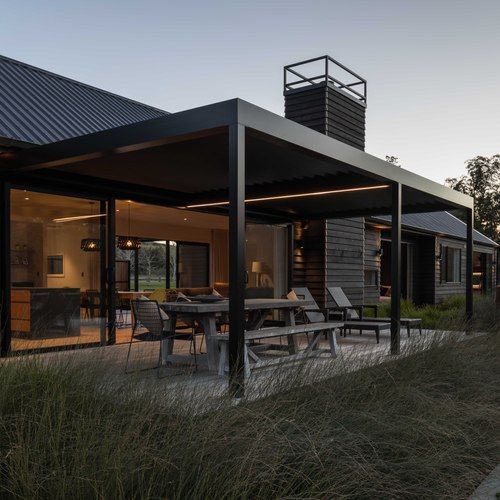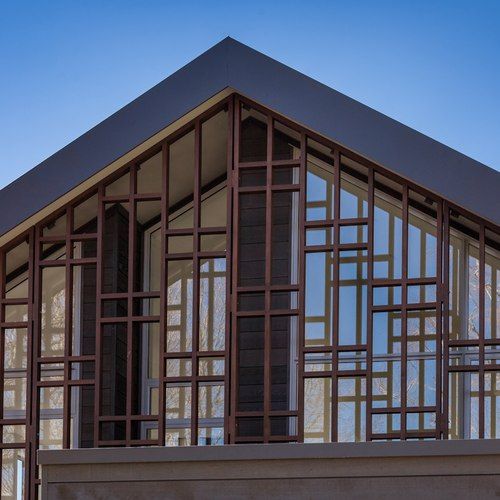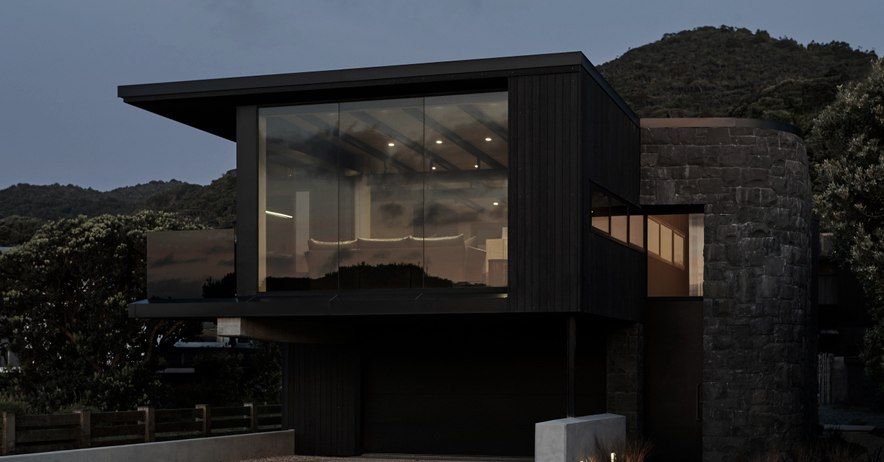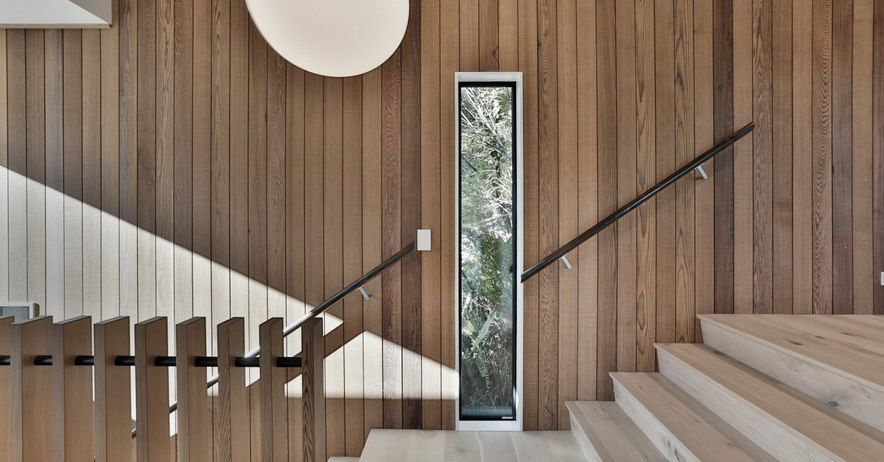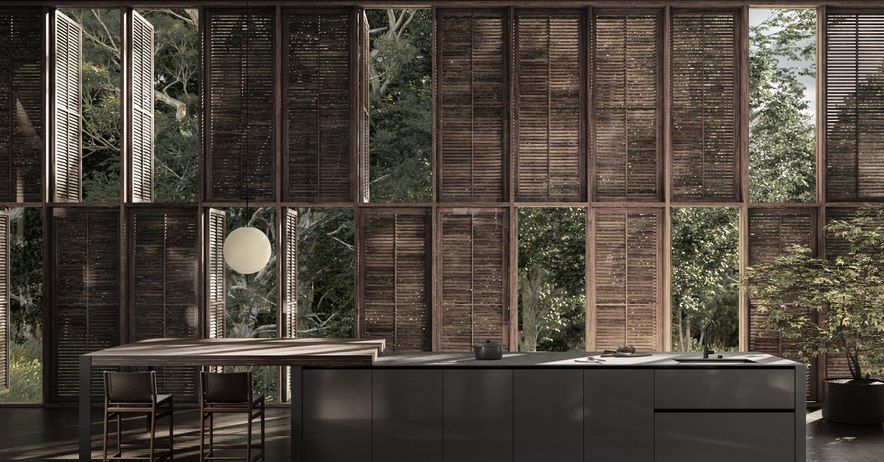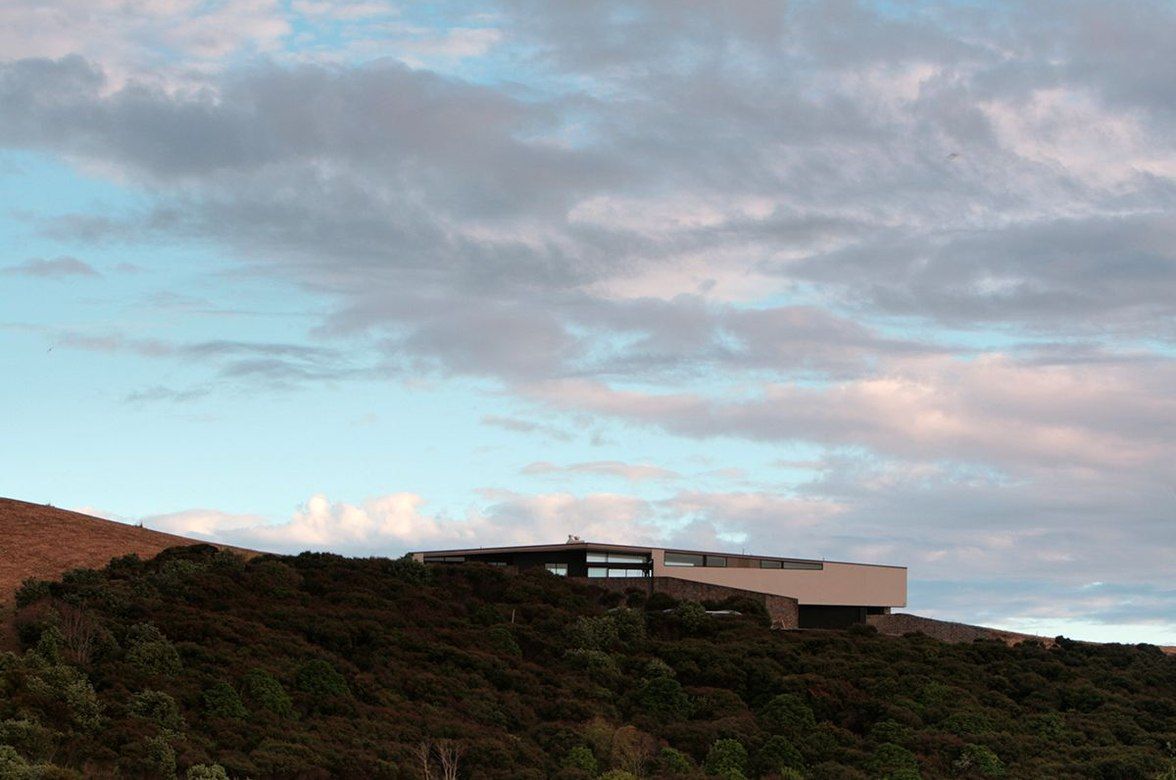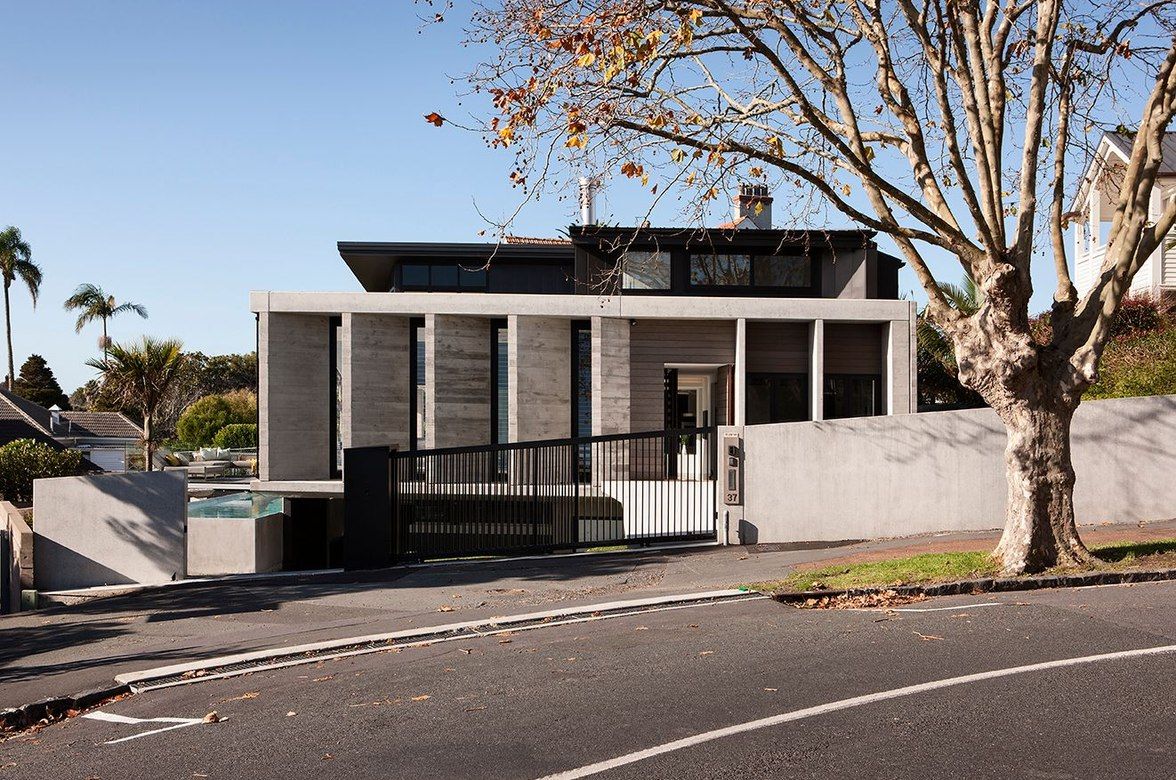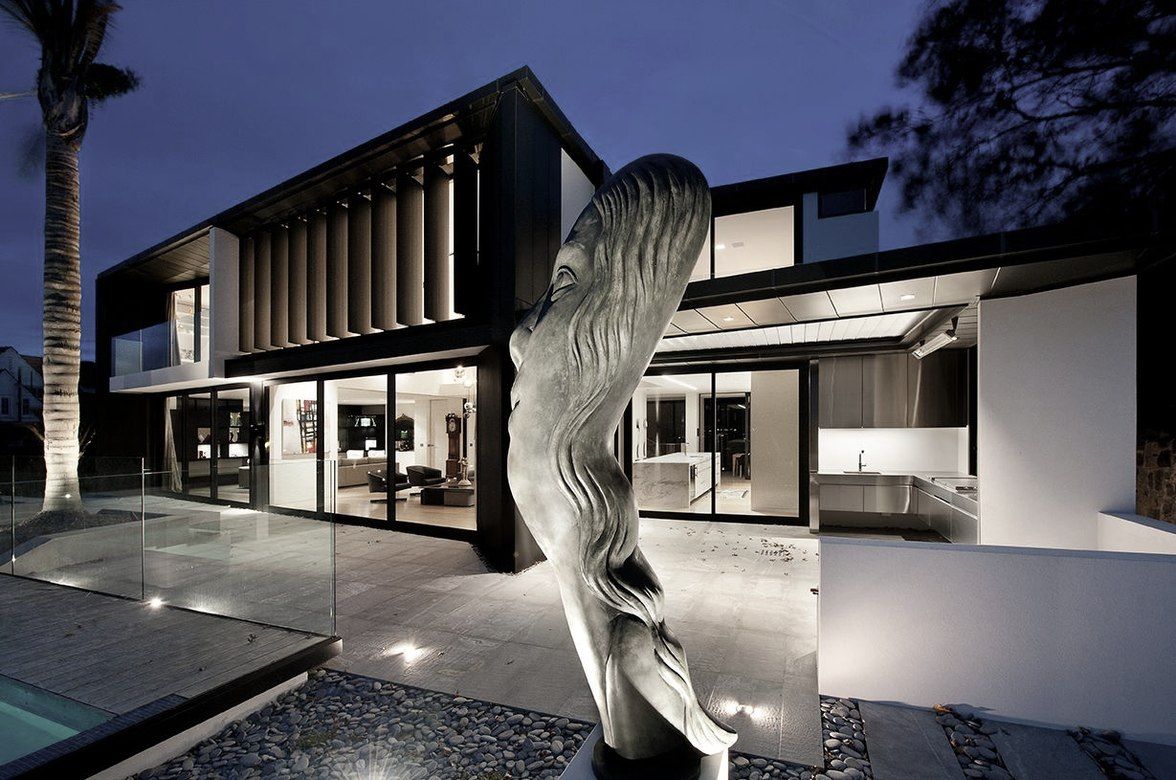Piha House
By Daniel Marshall Architects
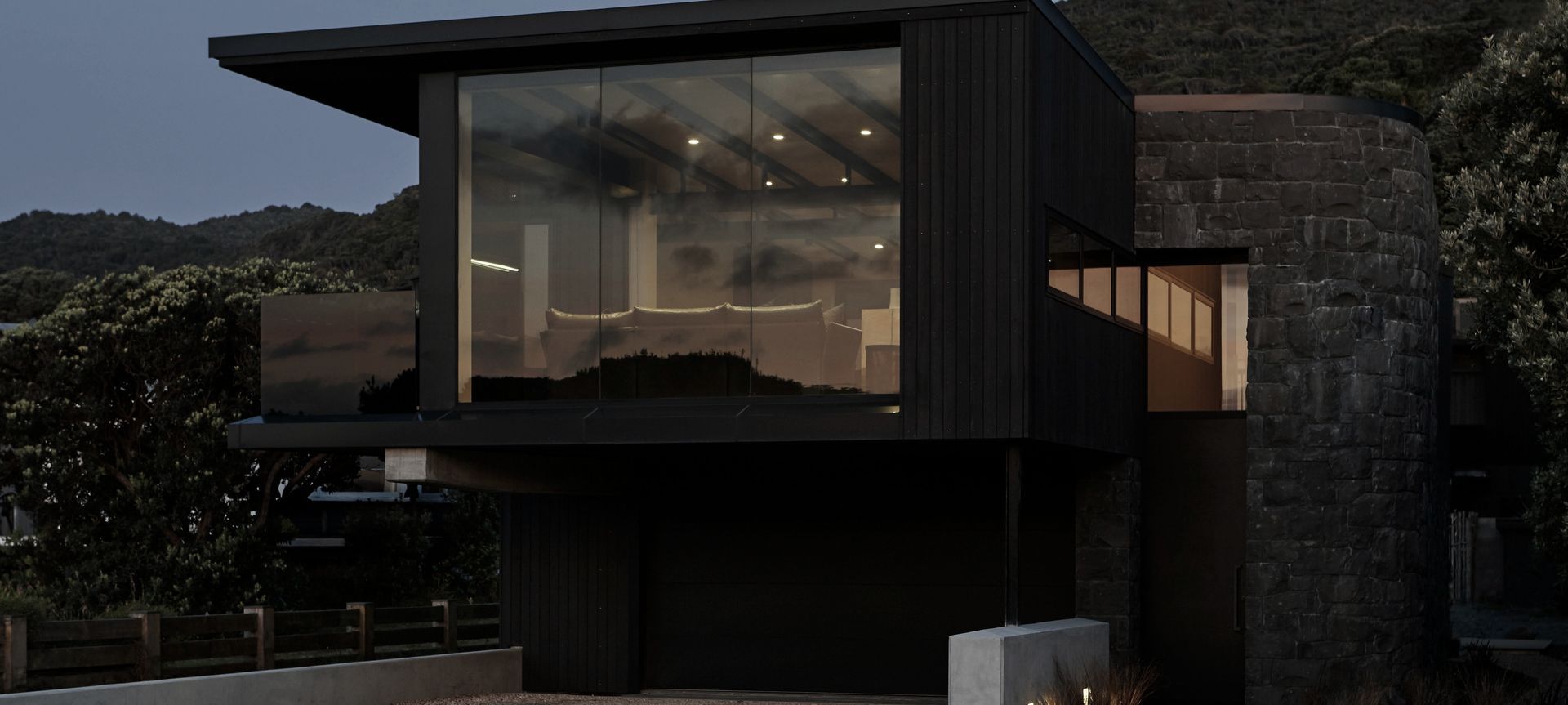
Borne by the land, Piha House crafts stone and timber and metal into a sentinel standing guard against the forces of nature.
It’s one of the oldest conundrums in real estate: the location is spot on but the house is no longer fit for purpose. What to do: renovate or detonate? For the owners of this property, located at Piha on Auckland’s western beaches, renovation was no longer an option, so the original house was removed and plans drawn up for a new home to be built in its place.
“When we were brought on board the owners already had planning permission in place for the main dwelling and wanted us to design a 60m² garage/sleepout that would be their home while the main house was being built,” says Daniel Marshall, director of Daniel Marshall Architects.
“In a nice twist, the first home I designed was just a couple of doors down on the other side of the road and so I wanted to acknowledge that synergy and drew on its New Zealand modernist bach feel for the design of the sleepout.
“Fast forward a couple of years and the owners got in contact to say that they were rethinking the main dwelling and wanted us to produce a new design that would be informed by the detailing and materiality of the sleepout.”
A part of the Waitakere Ranges, Piha is renowned for its natural beauty and as such, the area is subject to some pretty tight regulations around resource consent including height to boundary, flood planing and site coverage.
“While the mechanics of the design would be informed by the consenting process, I wanted the experiential element of the design and ultimately the house to be informed as much by the experiences you might find along a west coast beach—caves, grottoes and jagged rock pools—as the stipulations of council,” says Daniel.
“The harsh environment calls for an equally unyielding exterior capable of standing up to the forces of the natural elements of wind and sand and sea. The original consented dwelling featured cedar cladding and so we ran with that and added aluminium (in the form of the window frames), concrete and local basalt.
Daniel says the scale of the sleep out—60m² within a 30m² footprint—established the scale of articulation of the main house, with living on the upper level to capture the views and for privacy.
“Structurally, the living level cantilevers four metres out over the garage below, reminiscent of a finger of basalt projecting seaward but which has been long since eroded from below by the sea’s implacable current.
“Internally, the design drew strongly on the modernist bach aesthetic, with its exposed roof structure, while the floorplan is an arrangement of complex forms—divided between private and shared spaces, internal and external, yet all contained within the footprint. ‘Externally’ there is the covered deck off to one side and a negative, or missing, space that is part fernery, part light well, which separates the private spaces from the shared spaces.”
Creating this arrangement of spaces has, Daniel says, resulted in quite a lot of interest and movement.
“As you would hope, the overall result is a sum that is greater than its parts, providing multiple experiences in what is quite a small house. We have diverged quite radically from the originally consented design but have remained formally sympathetic to the area.
“The house is a reminder that everything is a process of its own time—much like the environment in which it sits—and a synergy between the client’s dreams and our ability to make those dreams real.
“It has been a privilege to be involved in the process and I hope that there will be an opportunity to realise a third Piha House.”
Words by Justin Foote.
Photography by Jackie Meiring.



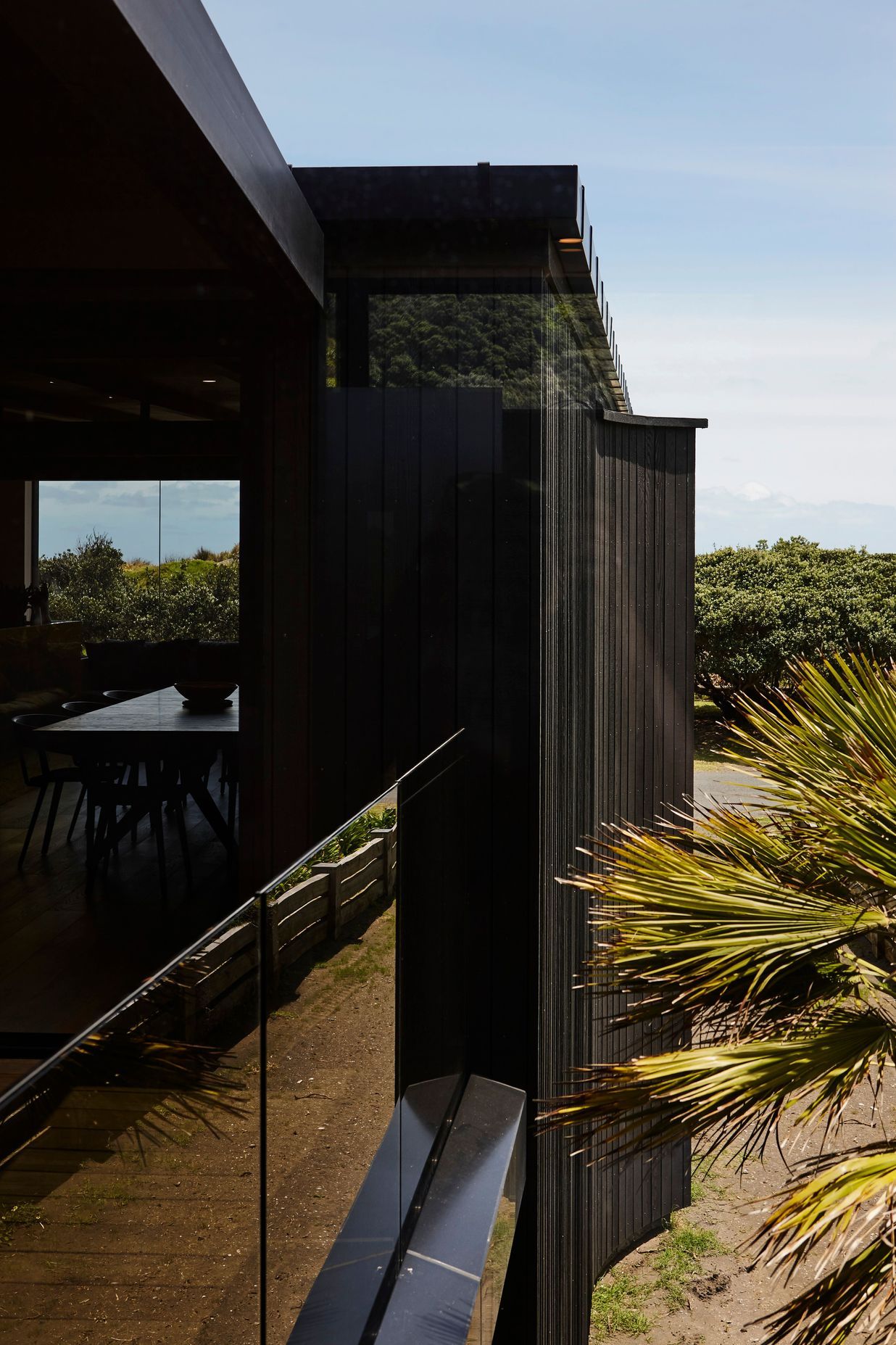
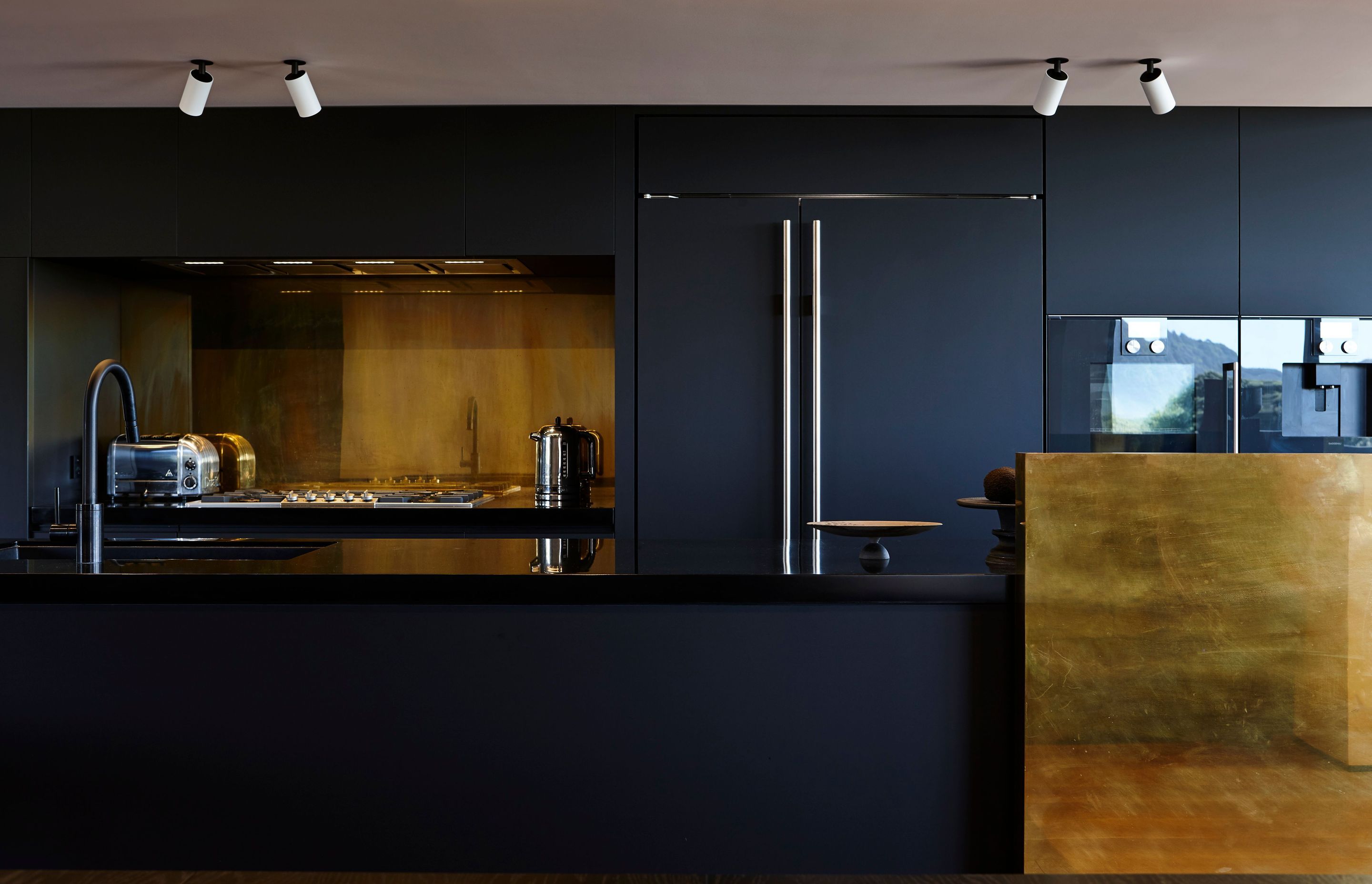
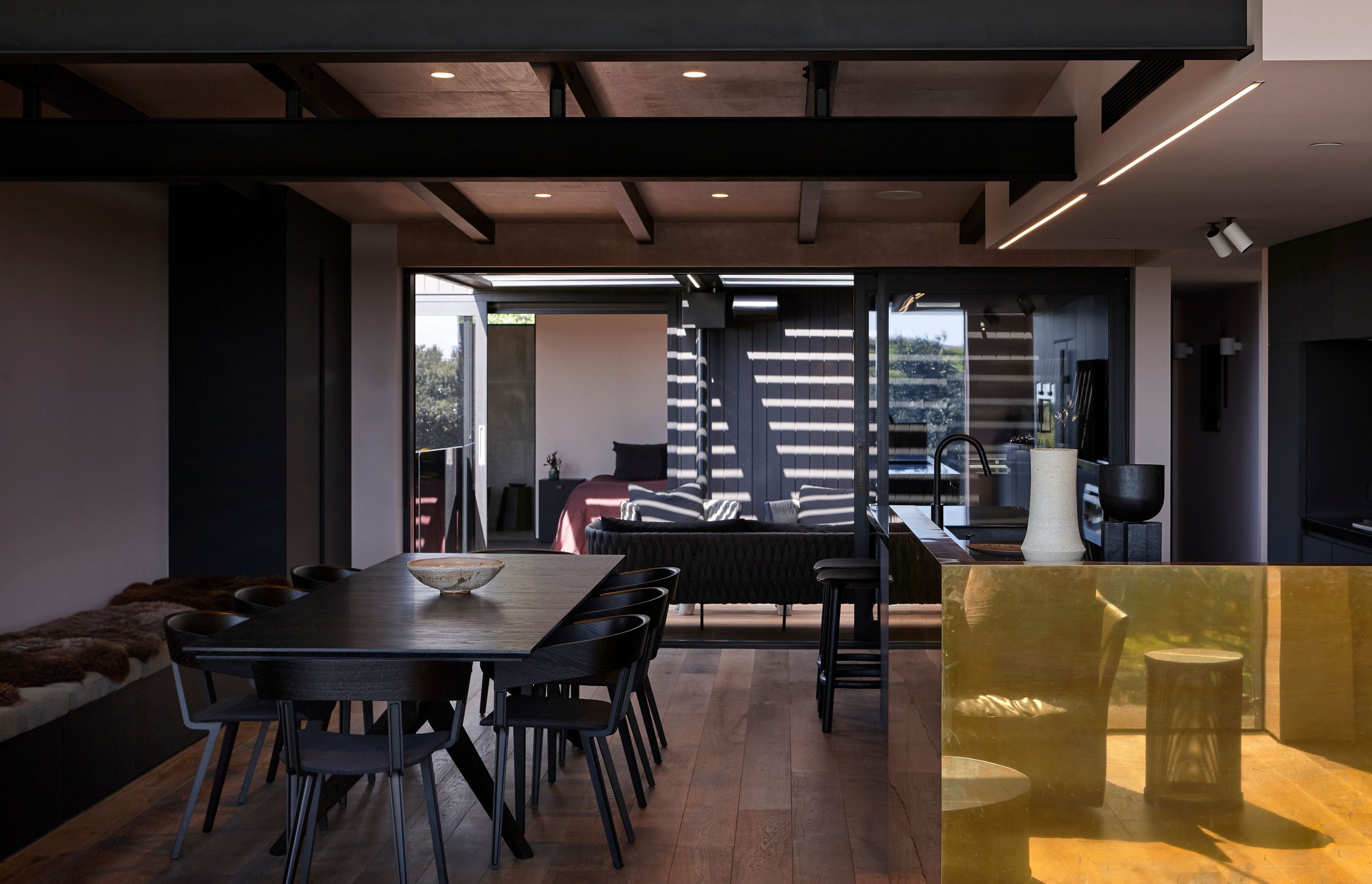
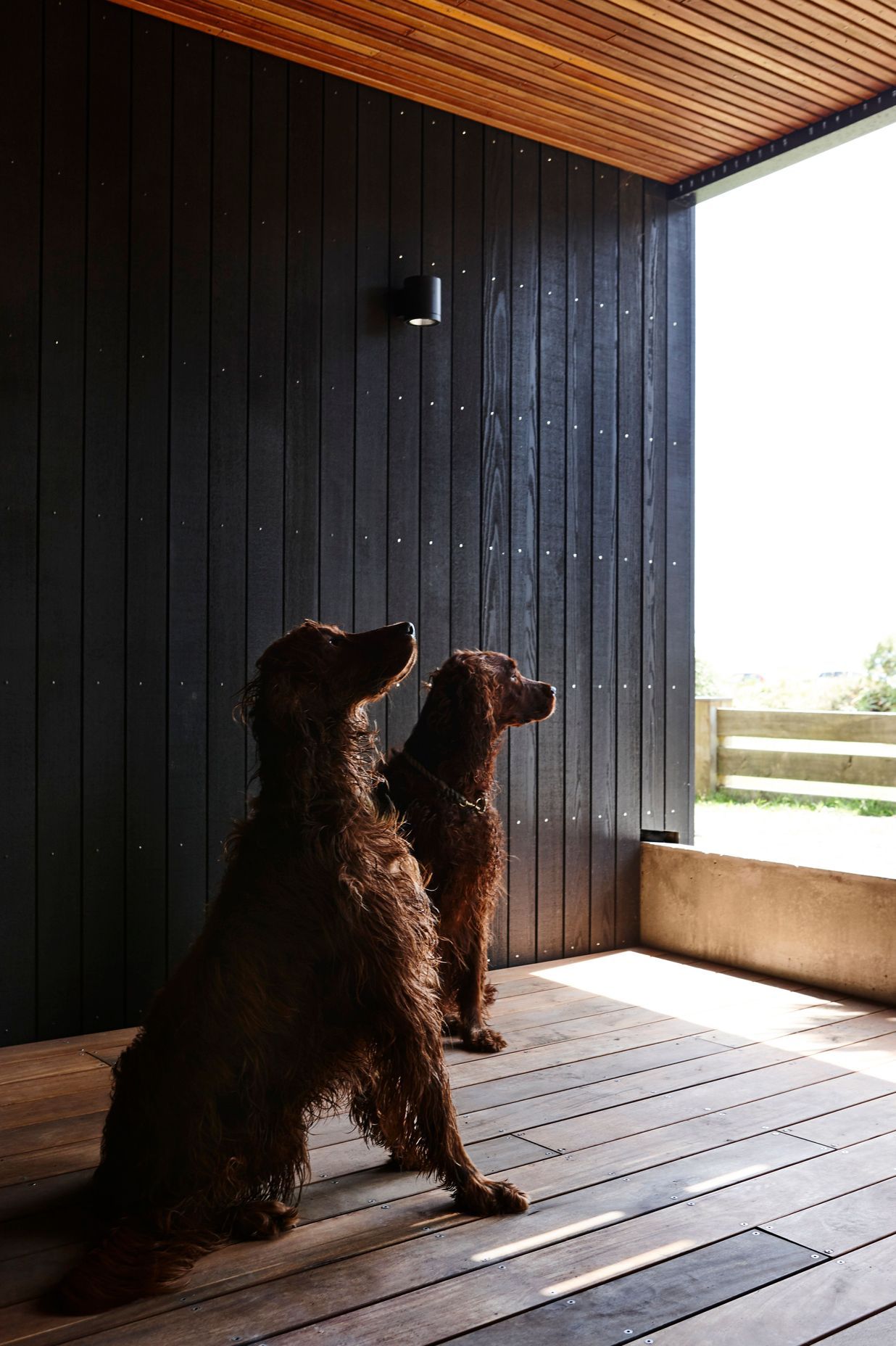
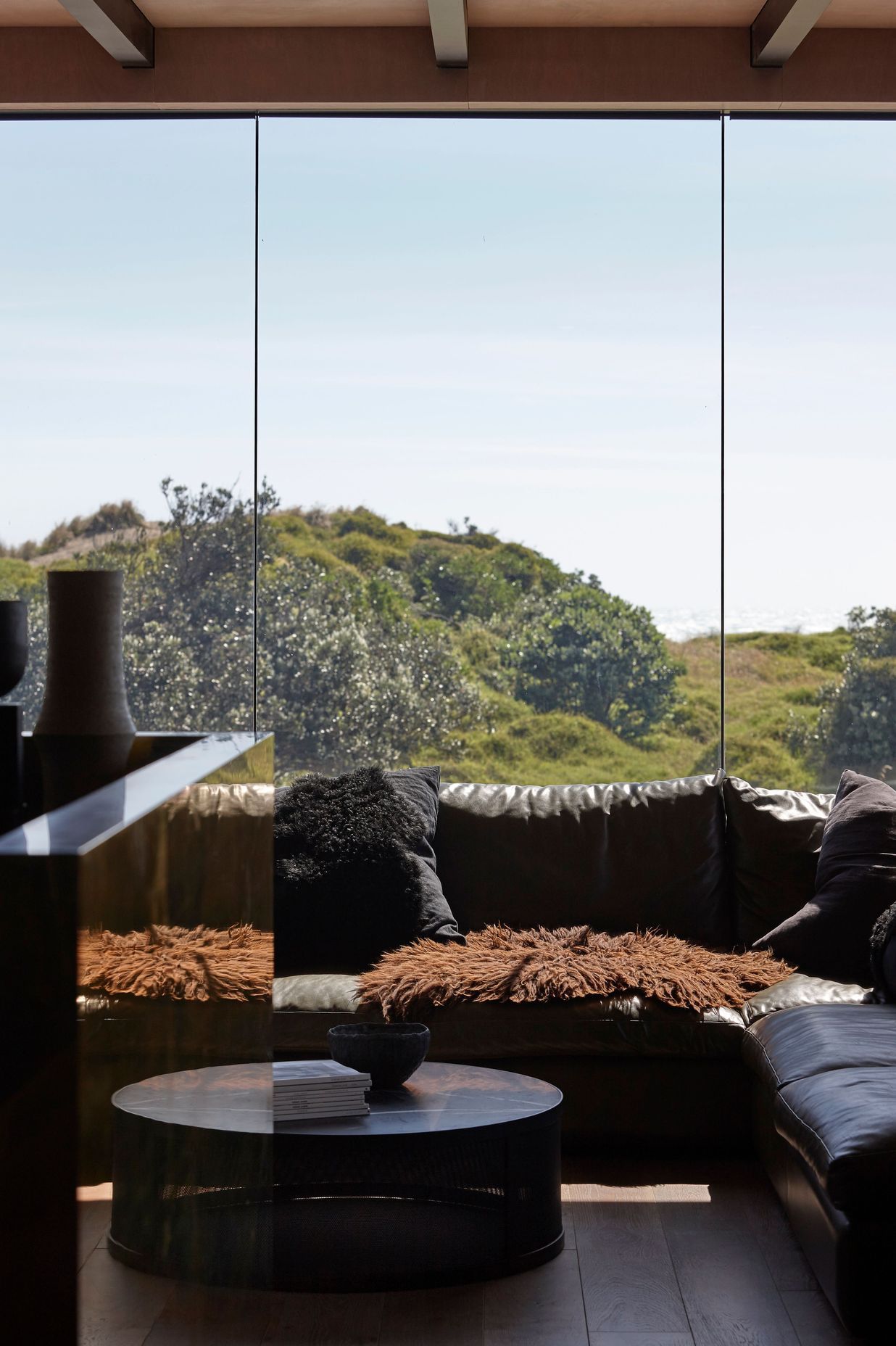


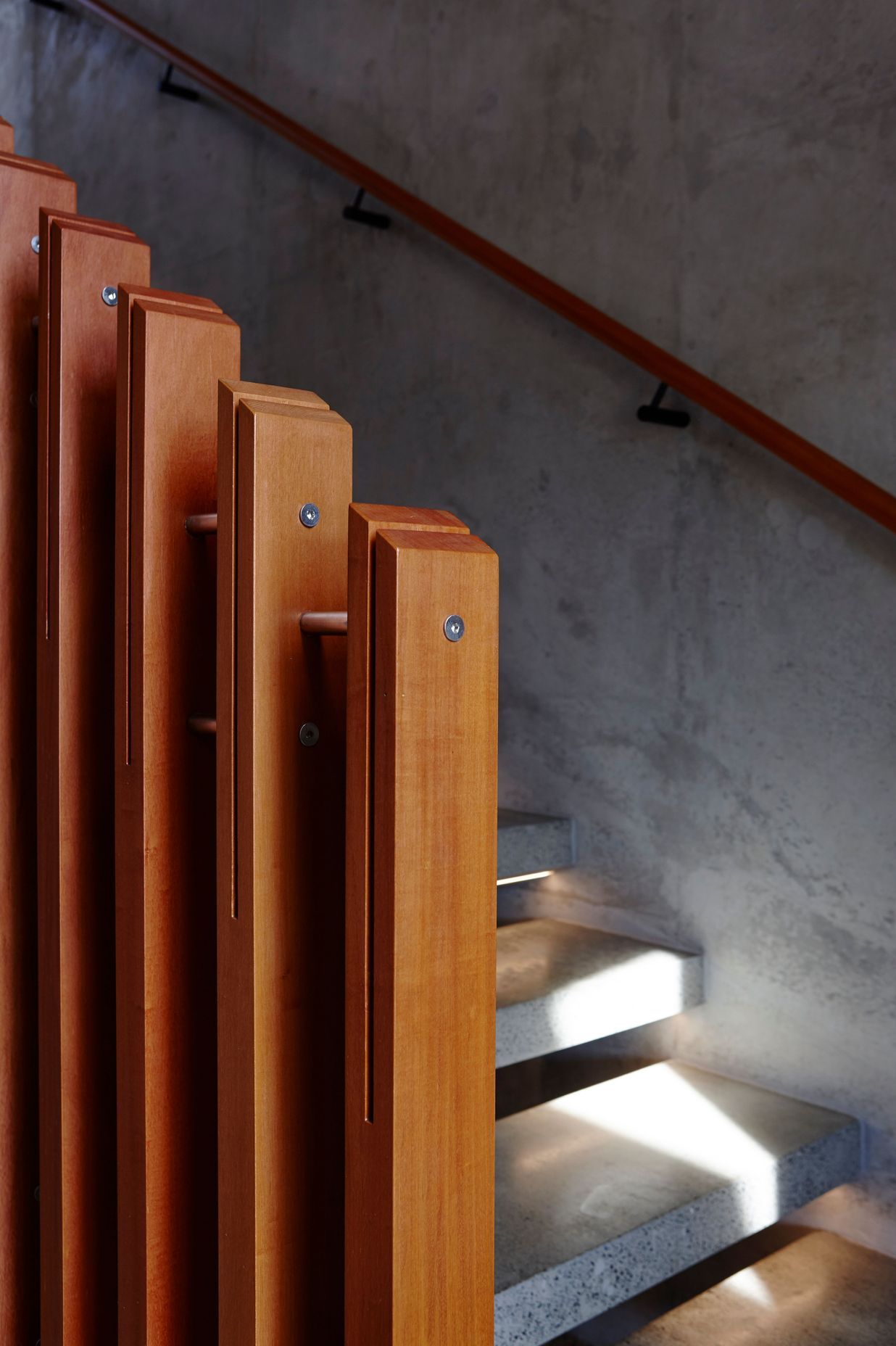

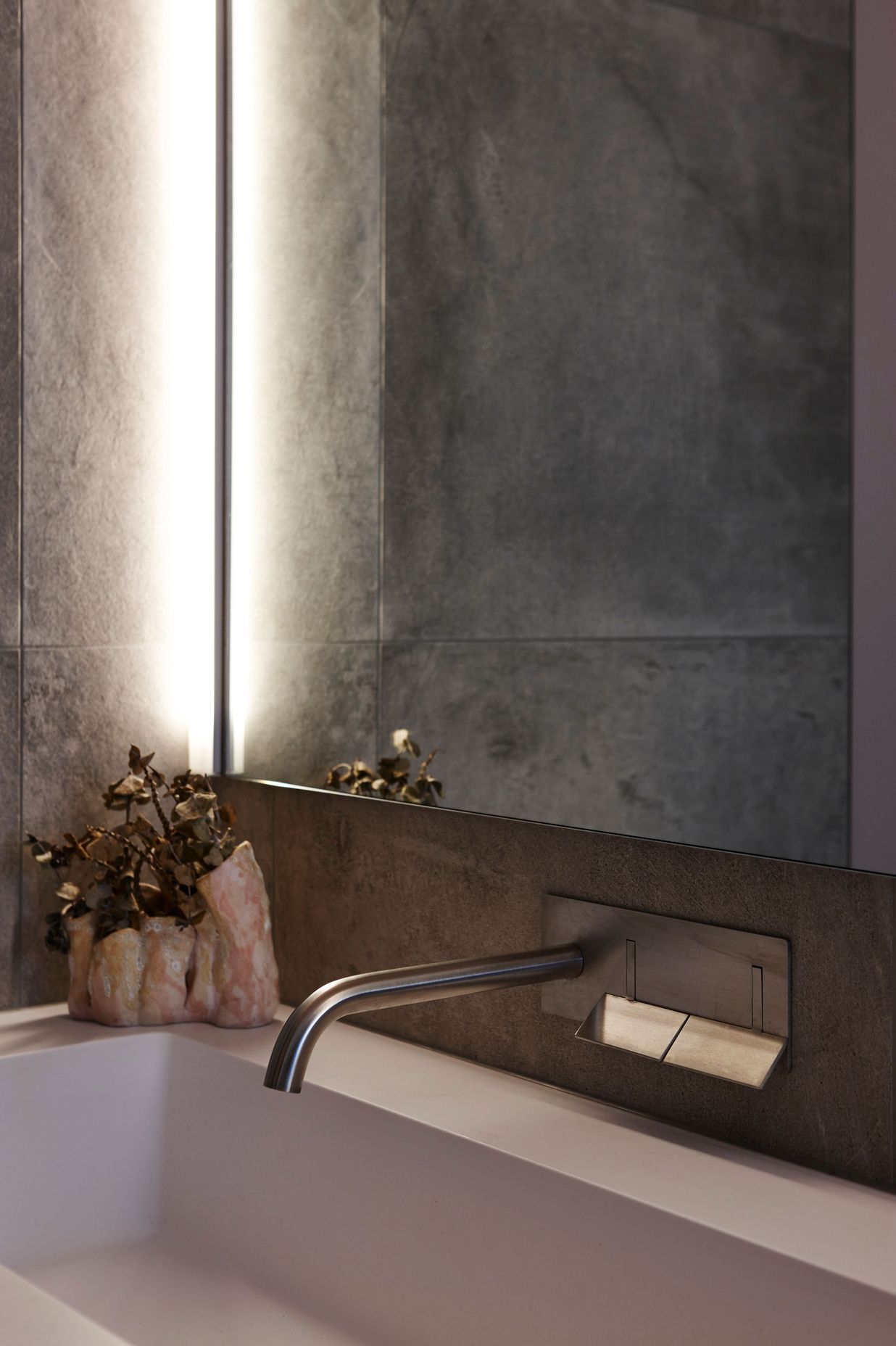

Products used in
Piha House
Professionals used in
Piha House
More projects from
Daniel Marshall Architects
About the
Professional
We are DMA. We create carefully crafted architecture in NZ and abroad to seamlessly integrate people and place.
Daniel Marshall Architects (DMA) is an Auckland-based practice who are passionate about designing high quality and award-winning New Zealand architecture. Our work has been published in periodicals and books internationally as well as numerous digital publications, including ArchDaily.com – the world’s most visited architectural website.
Daniel leads a core team of four individually accomplished designers who skillfully collaborate to resolve architectural projects from their conception through to their occupation. DMA believes architecture is a ‘generalist’ profession which engages with all components of an architectural project; during conceptual design, documentation and construction phases.
We pride ourselves on being able to holistically engage with a complex of architectural issues to arrive at a design solution equally appropriate to its context (site and surrounds) and the unique ways in which our clients prefer to live.
- ArchiPro Member since2017
- Follow
- Locations
- More information





